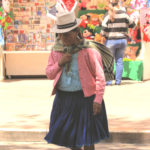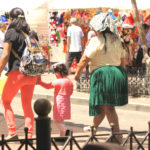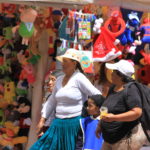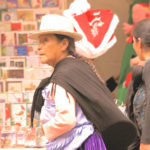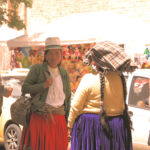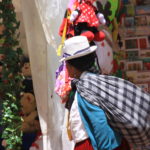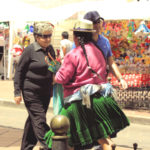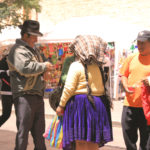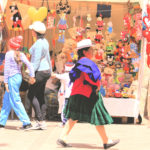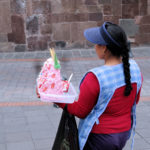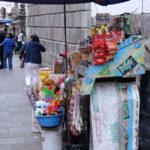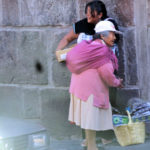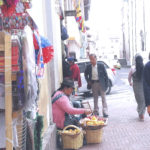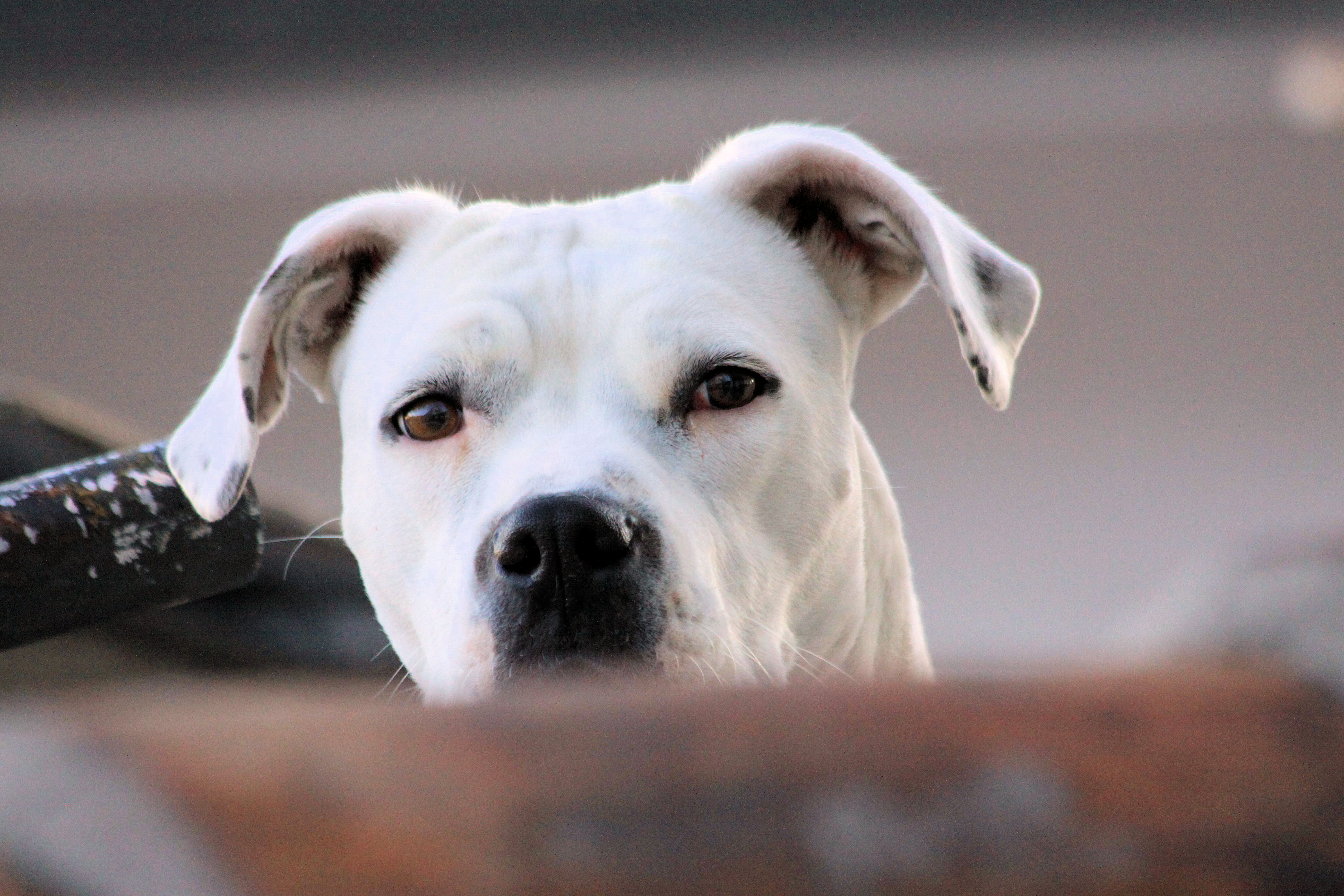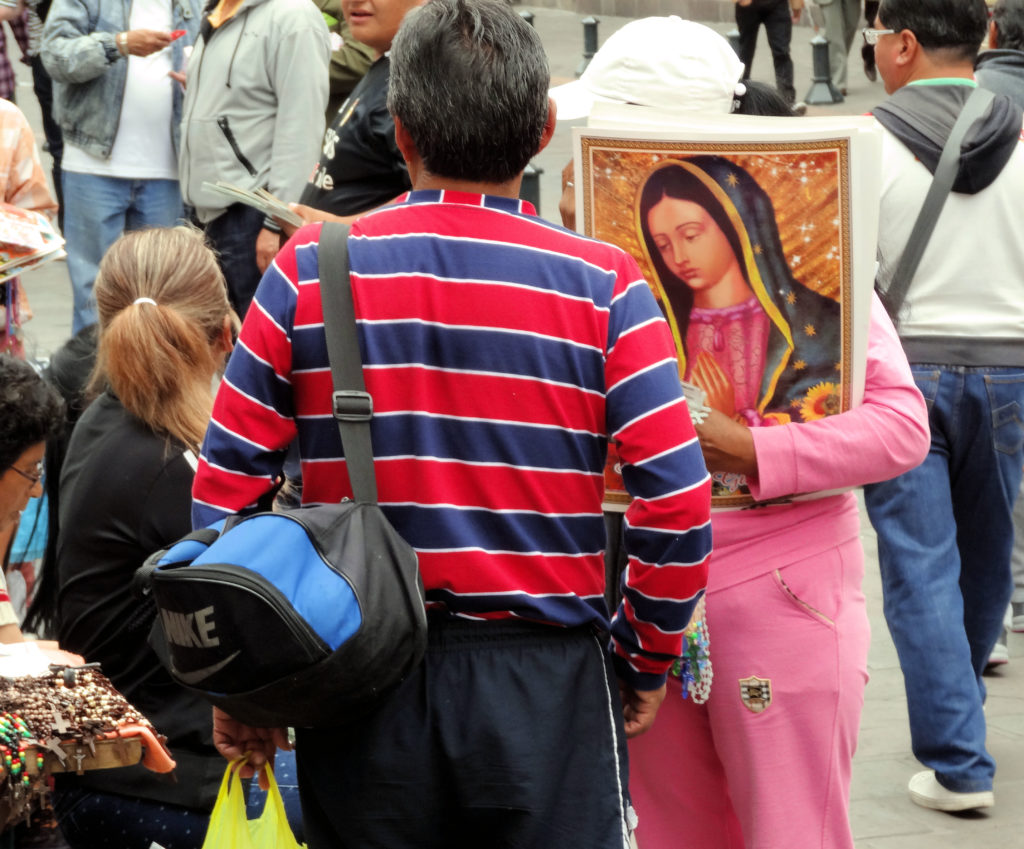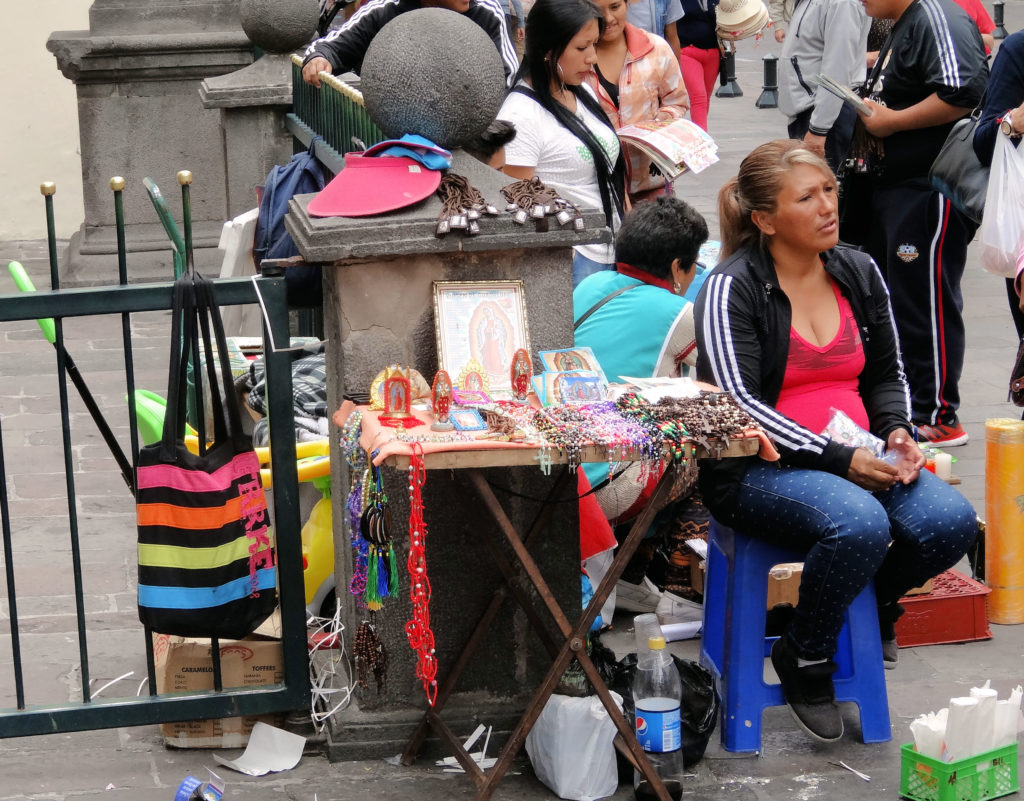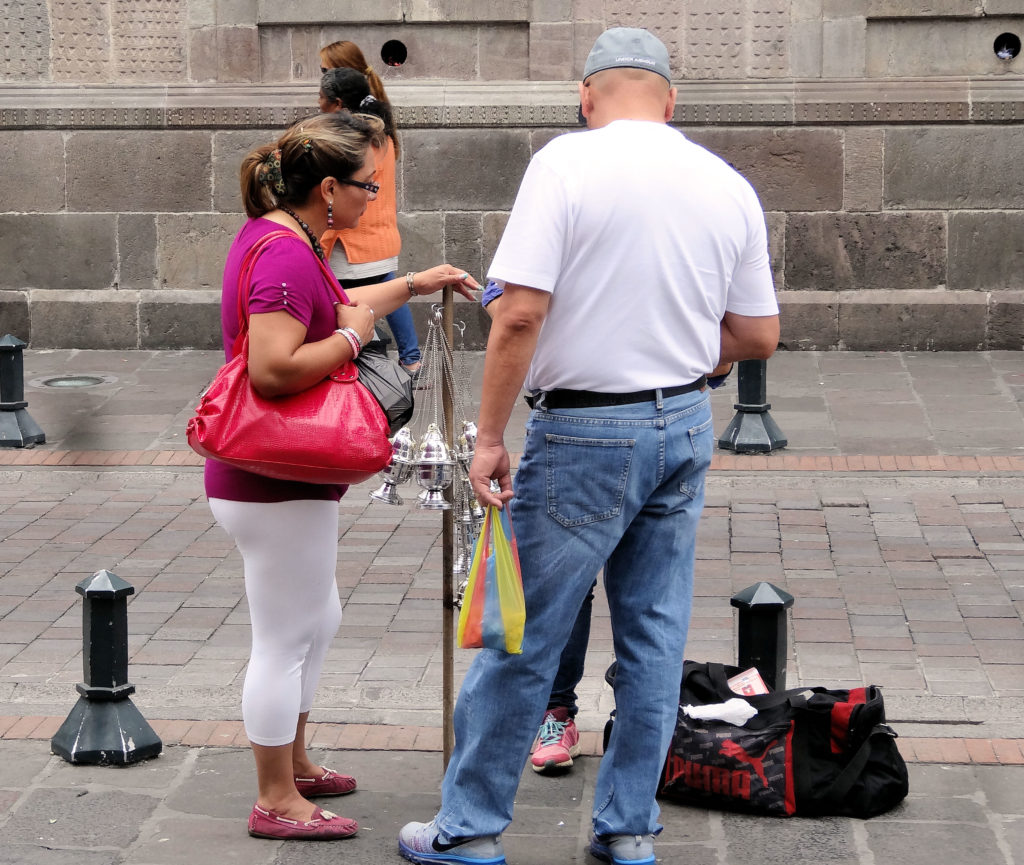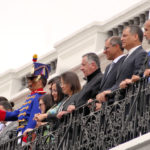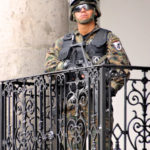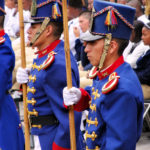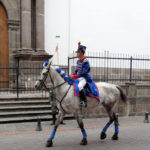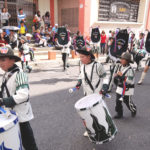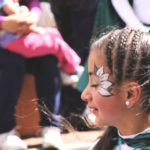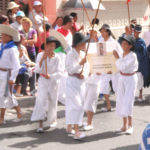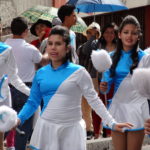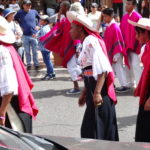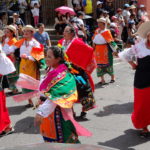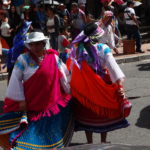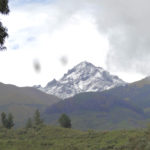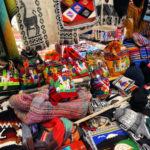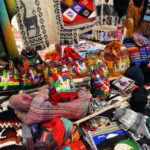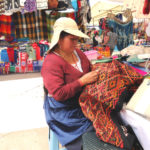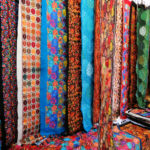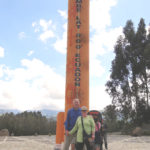When the Spanish arrived in Latin America, they tried to force the indigenous people to dress exactly the same. This was of course one method of controlling them. The natives refused to change their way of dress and over the years each area of South America can be identified by the different style of dress and hat. In Cuenca women wear velvet skirts with a heavily decorated bottom that sways whenever she walks. Her blouse can be anything and of course her hat is Panama straw. These hats originated in Ecuador not Panama at all. Usually her hair will be in pigtails and her baby or other portables will be tied to her back with a blanket. We saw many of these ladies today working in the flower market featuring the roses, sunflowers, margueritas and carnations they grow for local use and export.
Category: Ecuador
The first day in Cuenca
Sally at work on her travel blog.
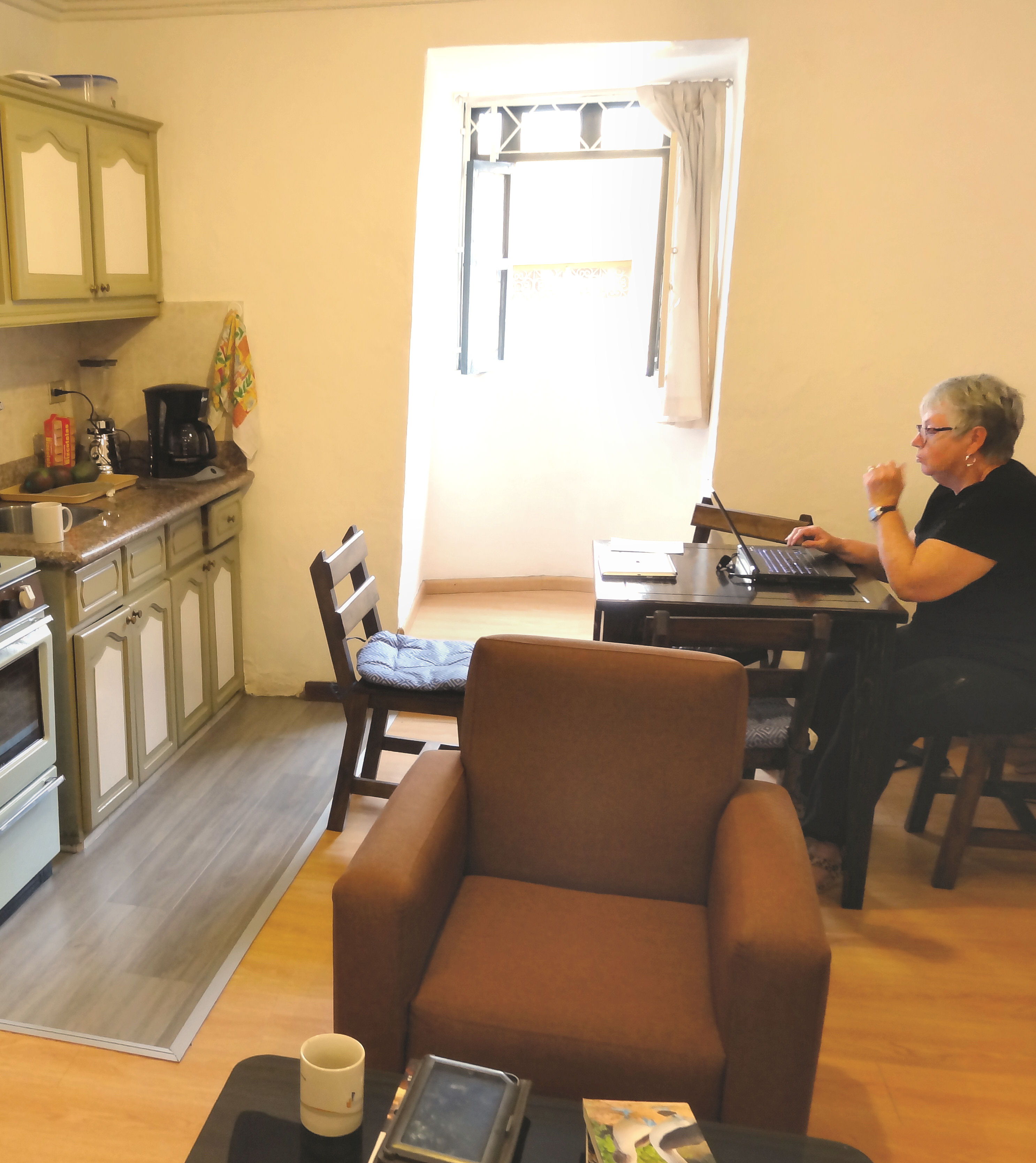

Street Vendors on Quito
Leaving Quito
We left Quito this morning at 6: 30 heading for Cuenca. Every morning and evening we could see the volcano out our window and the lights of Quito twinkle on. We did not go up the mountain to visit the Angel of Quito because we want to share that moment with Thomas when he comes. But she got a nod every day and used her as a guide when we got confused by Quito’s winding streets. The volcano changed daily. Sometimes she was blanketed with clouds and she disappeared completely. Sometimes she stood dramatically against a blue, blue, sky. Always she was there. Just like the neighbor’s dog who would woof- woof at us when we sat of the balcony or leaned out the window to watch the neighborhood change with the light and the time. From the plane window we watched Quito fade away giving way to verdant mountains, peasant villages and eventually to only clouds. An hour later we were in Cuenca, in a different apartment, exploring a new neighborhood, waiting to see what is out there.
Adios, Sally
El Sagario
December 12 honors the Virgin of Guadalupe and she is especially important in Latin America. We slipped into El Sagrario and were met with a full Mariachi band plating before an altar honoring the Virgin completely covered with roses, lilies and sunflowers. People were singing with the mariachis and clapping and praying all at one time. The altar at the front of the church was covered with calla lilies and a beautiful Latin interpretation of Bethlehem. The church was started in 1657 and completed in 1706. By most standards it is small, but today it felt like tchurch most worshippers felt at home in. Respectful of the congregation, Troy did not take pictures. However, the crowd outside did not waste a minute making a profit. Reminded me of the New Testament story when Jesus cleansed the temple.
I Love Another Parade
One thing Troy and I have learned is that sometimes the trip just comes to the traveler. We were having a coffee this morning and heard the distinctive clip clop of horses hooves. These gorgeous animals were making their way down Calle Garcia Moreno and we followed them back to the Plaza Grande. This was the traditional time that the president of Ecuador greets his people but this was done with more ceremony than usual. Mounted soldiers rode onto the plaza followed by the lancers. A band marched in and played patriotic tunes and the President waved and the crowd enthusiastically shouted VIVA. Horses and lancers circled the square, circled the fountain and made a grand exit. Policemen kept the crowd well in hand, surrounded two ladies and moved them away and sent another character away from the scene. There was a small protest at the end of the ceremony when six or eight ladies shouted and waved a poster saying they did not want four more years of the President. No one paid them any attention, dignitaries disappeared and vendors reappeared and business when on as usual.
Advent Begins
Part of the joy of travel is the wonderful and unexpected surprises one happens upon. We left a rather solemn artist display in Bella Vista and asked the taxi driver to drop us off at the Plaza Independencia. He could not get any closer than four blocks away so he dropped us off at the VOTA Basilica and we received an early Christmas present. A two hour long parade to introduce the Christmas season unfolded before us. Indigenous dancers in native costume danced toward the cathedral. Skirts swirled, flags waved, sombreros bobbed as the dancers performed uphill no less. A group from the Amazon had donned feathers, made bird calls and stopped to shoot Roman candles. Clowns handed out candy to the children. Military band, high school bands, middle school bands beat drums, struck bell lyres, and played their instruments rather badly but so enthusiastically. The only melody we recognized was THE BATTLE HYMN OF THE REPUBLIC which struck me as an odd choice. Age did not deter the performers. Some were very young and their parents were close by with water for them; some had seen a number of parades in their life time. I made friends with a couple who proudly pointed out their son and who were going to visit Houston. I can only hope that they will enjoy their visit as much as we have enjoyed ours. Below are just a few shots Troy made. Click and enjoy
Adios, Sally
The Road to the Volcanos
Leaving Quito and heading north takes a traveler to some of the most spectacular landscape imaginable. Just half an hour out of Quito Troy and I stopped at La Mitad del Mundo which is latitude 0 and we were able to straddle the equator. A young man who was most passionate about this site delivered a lecture on how the site was determined by the French, how the metric system developed from this discovery, and how we need to change how we teach geography from a scientific globe not a historical globe. Interesting, but I was ready to get to the shopping. One the way to Oltavalo we drove through a large area where the gorgeous Ecuadorian roses are grown. Greenhouse after green house full of these long stemmed beauties which vendors along the highway offer for $2.00 a dozen. In this same area a traditional snack called bizcochos is a nice treat. Dip these low calorie tidbits in a caramel syrup while you sip a cup of hot black coffee and all you can do is think about the next bizcocho. This little shop gave us a chance to glimpse the volcanoes and watch some llamas nibbling on the shrubs what are indigenous to the area. Llamas are proud animals that look you in the eye and spit on you if you offend them. Next was Otavalo the largest textile market in Latin America. The market was calm; no one badgered the prospective buyer; bargaining was expected and the weaving and dying techniques were amazing. Warm socks, blankets, scarves, hats, wooden trays, the inevitable tee shirt obviously not made in Otavalo, and poncho after poncho. The people are tiny but proud and all over the area they wore their native dress. Long wrap skirts, white blouses, gold colored beads and shawls for the ladies and ponchos, hats and a long braid down their back for the men. The braid is cut if a man commits a serious crime and everyone knows his criminal past. Since we did not need a pig, we skipped the animal market.
The last leg of the journey was spent in the Cotacachi Ecological Reserve. The daily rain came long, but did not dampen our spirits. We saw orchids so tiny that we had to use a magnifying glass to see the blooms and mountains so high that we could only acknowledge our own insignificance. Villages at the foot of these active volcanoes produce some of the happiest people on earth. A German study showed despite the uncertainty of their lives no other people were more satisfied with their existance than these villagers. The drive out of the park was our reward for the day. The skies cleared, the clouds moved away from craters and we carried that image with us back to Quito.
Adios, Sally
La Basilica del Voto National
The National Basilica is the largest Gothic Basilica in Latin America. It took over one hundred years to complete and work was still ongoing until the middle of the twentieth century. It has soaring spires, detailed stained glass windows and gargoyles that represent the animals of South America. A giant anteater, a dolphin, caymen and monkeys and well as some we could not identify. If you click on the images below you can enjoy some of the artistry.
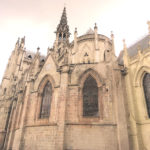
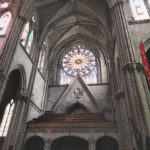
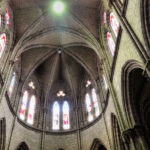


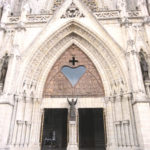
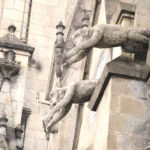




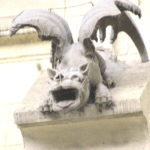
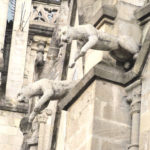


Quito Catacombs
The Museo de Sitio La Florida is a tiny museum on the outskirts of Quito that no one seems to know anything about. Our taxi driver assured me he knew where it was, but it took about five inquiries and three different GPS to find it. It is a burial site that goes back thousands of years and the bodies of the wealthy were still dressed in their shell garments. The poor were buried in hand woven garments what have been replicated. Our tour guide spoke no English, but I figured out most of what he was explaining. There were wonderful examples of pottery, gold jewelry and other artifacts from the early Andeans. Thankfully our taxi driver waited for us or we might still be wandering around that little suburb. Glad I this one out. Beautiful display and beautiful building, just out of the way.








